Active Sewing & Embroidery Posts

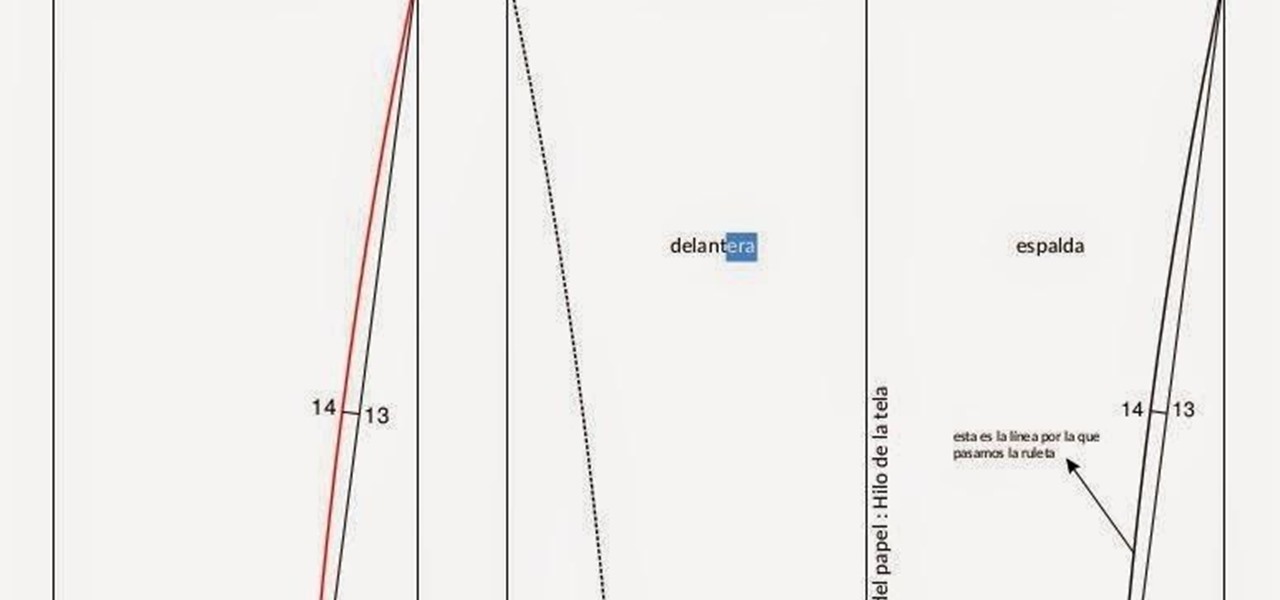
How To: Draft a Sleeve Pattern
A well designed sleeve is very important to creating a top or jacket that fits comfortably. Get your correct measurements before you begin. Please view the following step-by-step instructions and accompanying video and diagram to create the basic sleeve.
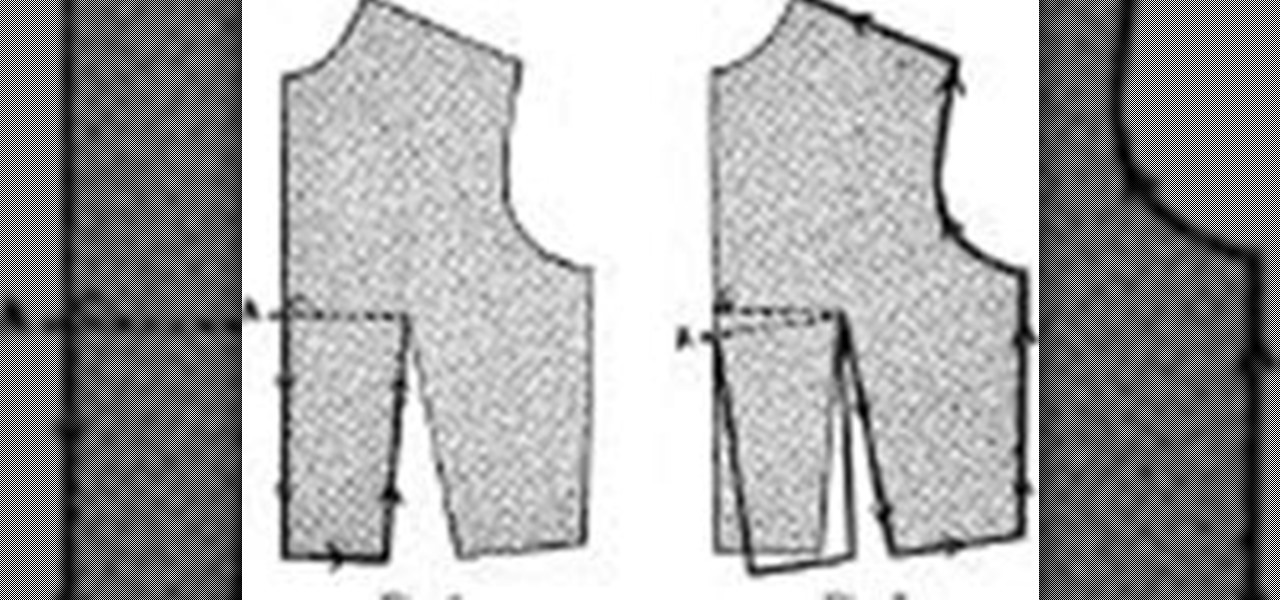
How To: Draft a Basic Bodice Pattern
Unlock the secret to clothing design. If you can draft and sew a basic bodice you can design virtually any kind of t-shirt, blouse or other top! Attach a skirt and you now have a dress! Take your measurements by using the guide in the " How to Take Your Measurements" section and let´s get started! If you would rather just whip up an easier beginners t-shirt go to How to Design a Quick T-Shirt.
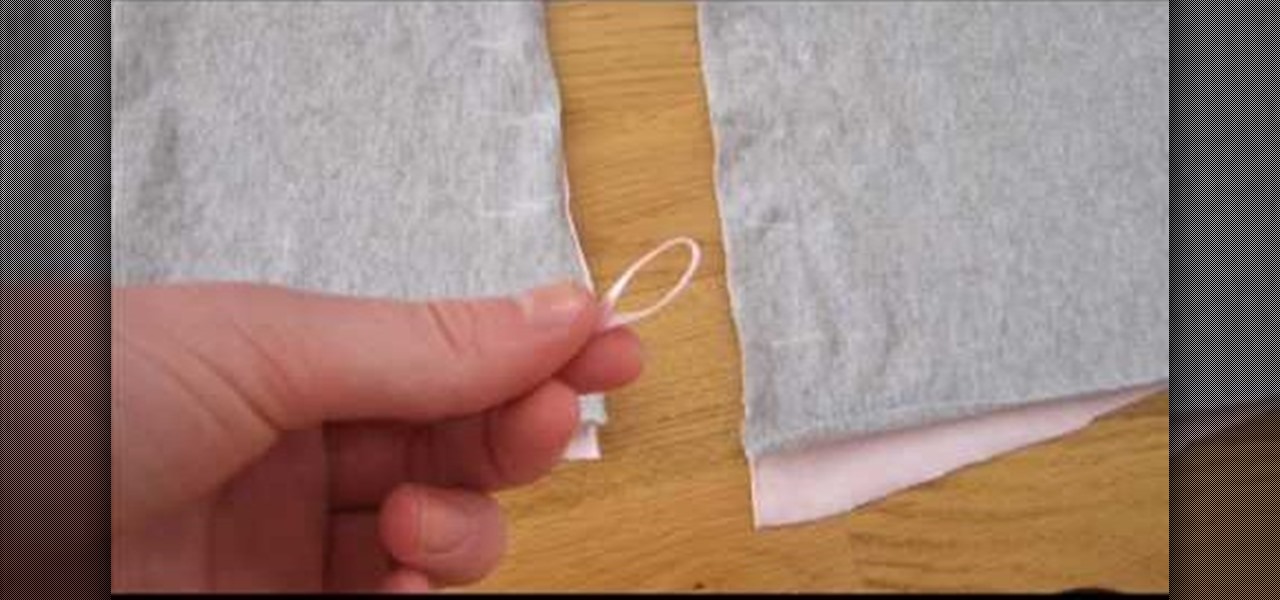
How To: Make your own handmade corset out of some old T-shirts
Upcycle your old T-shirts into a classy and fashionable corset top! All you need are some basic sewing notions, in addition to eyelets and eyelet pliers. Embellish your corset top with ribbon, appliques, rhinestones or any other accessory you fancy.

How To: Embroider a stretchy or knit fabric
The problem with stretchy fabrics is that stretching it out in am embroidery hoop will distort the look of the finished project. This tip shows you how to prepare your fabric by using a non stretchy stabilizer, which you can buy at any fabric store.
How To: Draft a Basic Pant Pattern Automated
You have read How to Draft a Basic Pant Pattern. It's a most useful guide, but the image is hard to read and the steps many and complex. That's why I wrote a little software program to do the hard work for you.
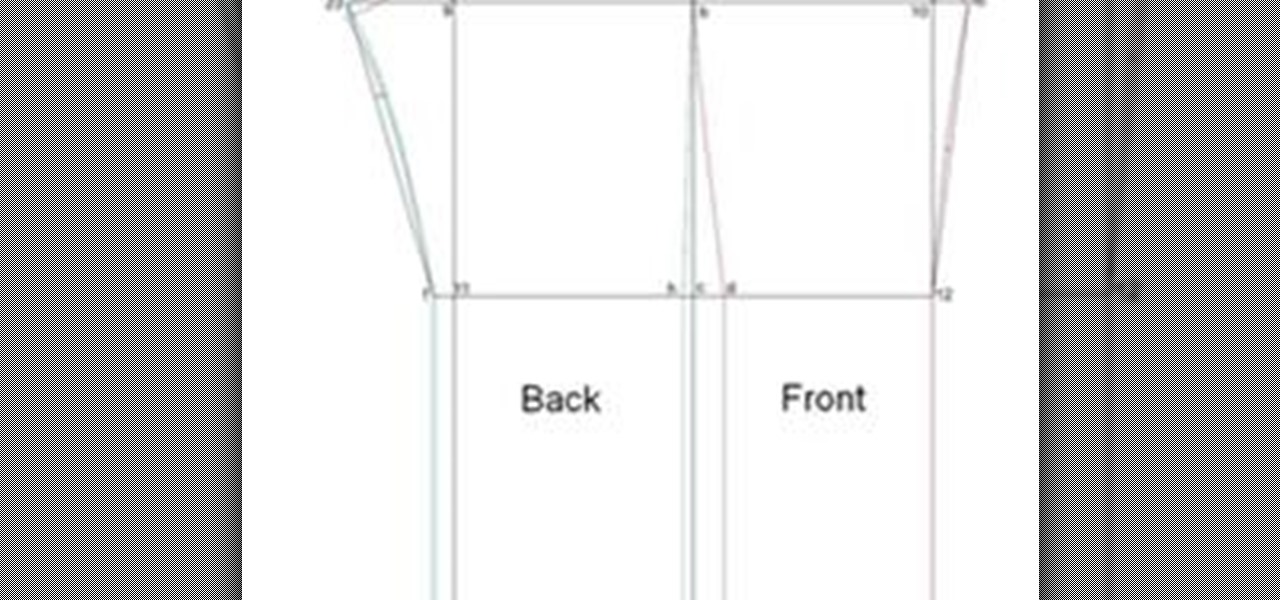
How To: Draft a Basic Pant Pattern
Written Instructions with accompanying video for anyone who wants to make a basic pant exactly to your measurements! Please get your correct measurements before you begin from How to Take Your Measurements.

How To: Make a hair bonnet or night cap
Nightcaps are something that will never get old and have been around for years and years. Originally, nightcaps were invented around the Middle Ages and were used as a way to help prevent head lice. As the years passed by they became more useful in other ways, especially when it came to keeping ones head warm. For women, they were also used to keep not only their head warm, but also to protect the hair from any kind of damage. This video tutorial will show you ladies how to make a hair bonnet...
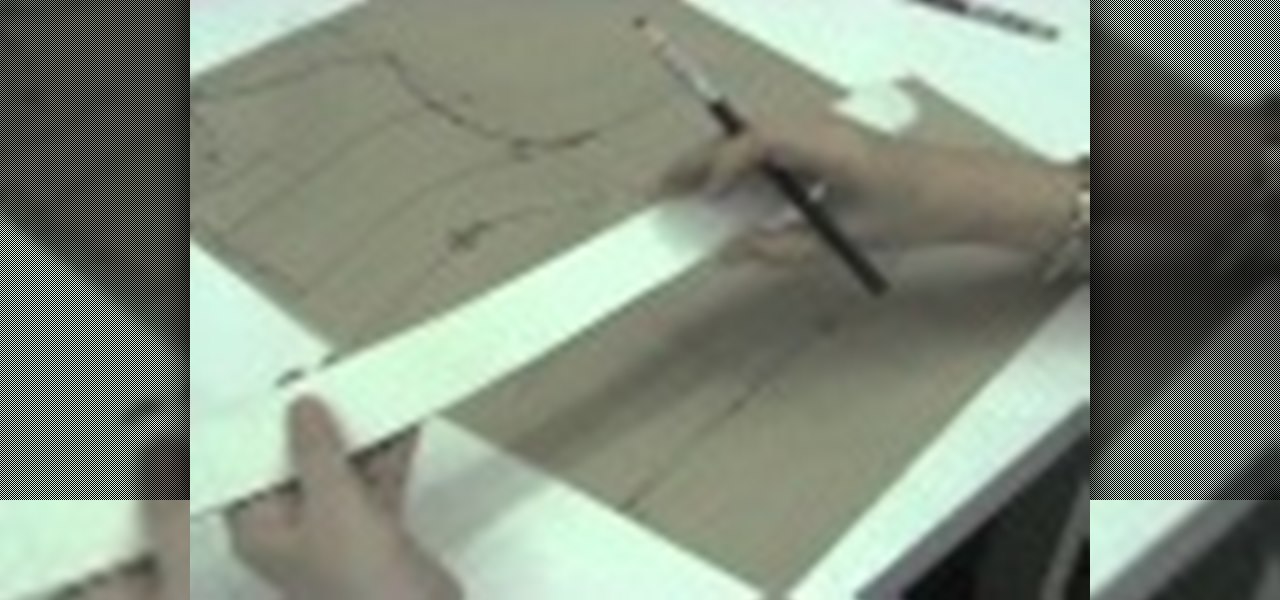
How To: Draft/Make Patterns in Different Sizes (Pattern Making of a Basic Dress with Waistline)
If you want to learn patterns drafting/making in different sizes (EXTRA SMALL, SMALL, MEDIUM, MEDIUM-LARGE, LARGE, EXTRA LARGE), now it becomes easy with these great videos that make patterns drafting easier and clearer.

How To: Sew a Knife Edge Pillow with a Zipper
This is a great project for beginners - sew your own knife edge pillow with a zipper. If you can, use a rotary cutter instead of scissors to get better, cleaner lines for your project. Also get a sturdy zipper.

How To: Make DIY Bohemian/Hippie Headbands
Need a fun getup for Earth Day, or want to make an inexpensive but highly fashionable costume piece for Halloween? Then you've stumbled upon the right video.
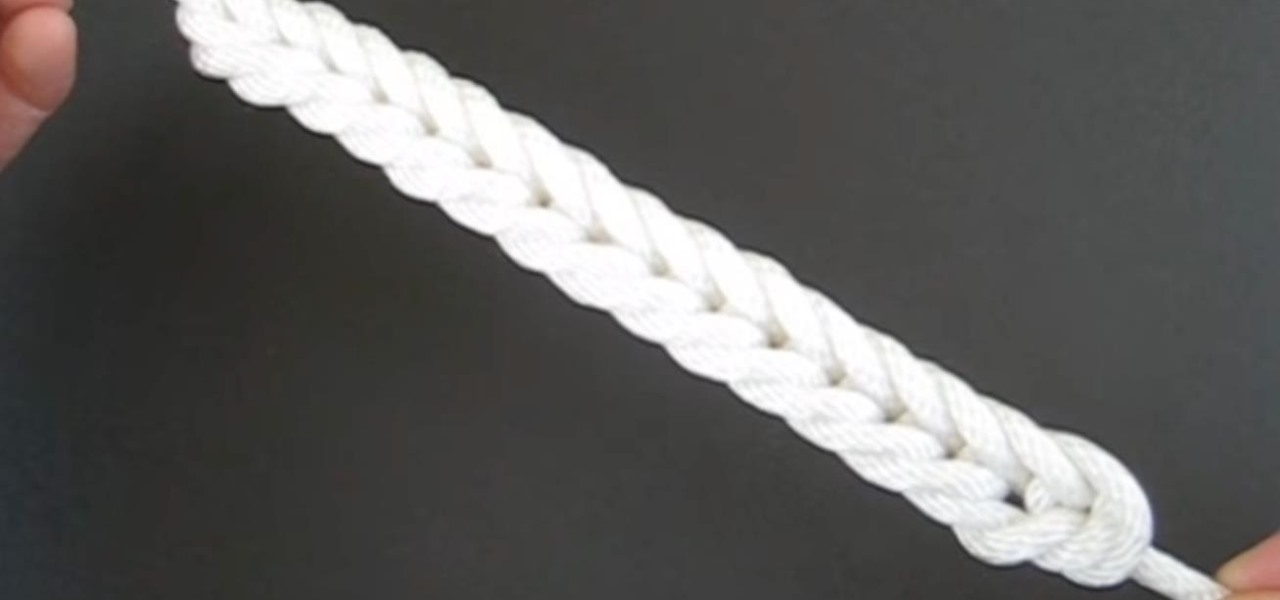
How To: Make a Military Bugle Cord Decorative Knot
Bugle cords are used as elaborate ornamental leashes on bugles and trumpets, but they are also used as snazzy ornamentation, called aiguillettes (a type of fourragère), on uniforms worn by certain members of the military. While you could buy one pre-made, you could also make one yourself. But this should not be confused with the infantry blue cord of the U.S. Army, which is another type of fourragère only with more elaborate knotting.
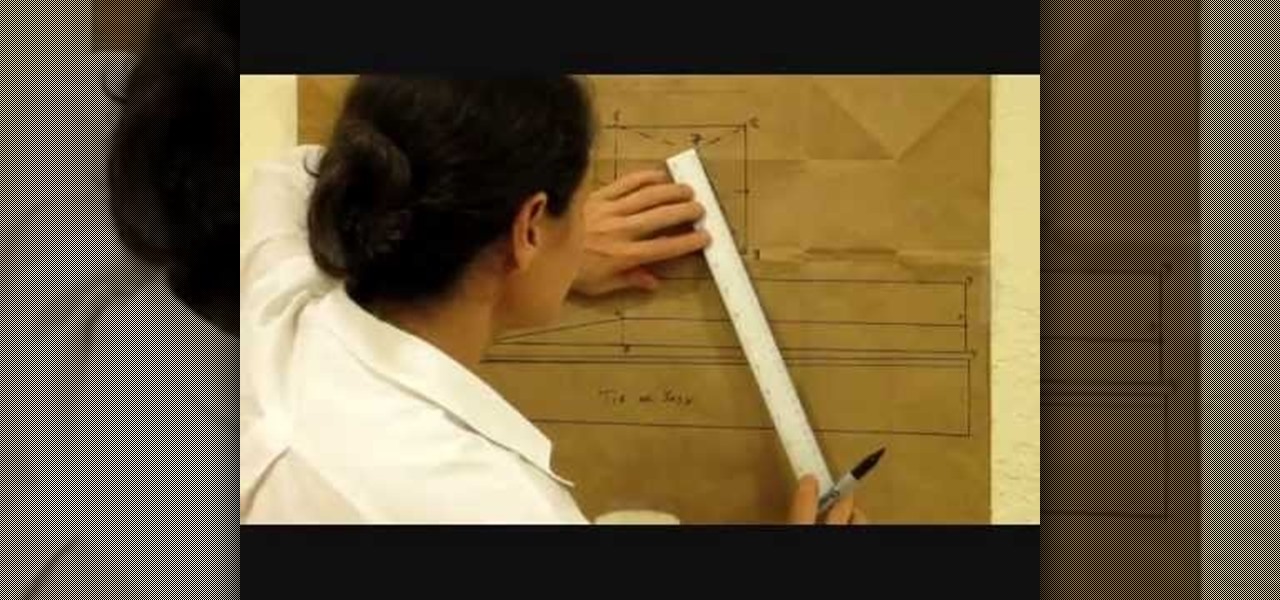
How To: Make a Doo Rag Pattern
Video: . Whether you are gardening, cooking, riding a motorcycle or just want to cover up on a bad hair day, doo rags are easy to make and fun to personalize to suit to your style. If you would rather just download the durag pattern click here.

How To: Take Your Measurements
These measurments should be taken and recorded before drawing up you clothing design pattern. Wear the bra and panties you will be wearing with the final garment. Another option, especially if you are going to be selling a series of the garments, is to follow a size chart. While sizing is not very standardized in the clothing industry, I like the charts on the Burdastyle website which are in both inches and centimeters. When measuring, the tape measure should be neither too tight nor too loos...

How To: Sew quickly by hand without using a sewing machine
Sewing by hand can actually go quite quickly if you don't have access to your sewing machine or if it's broken. Hand sewing can also be useful if you're working with especially delicate fabrics, attaching an applique or making a small repair.
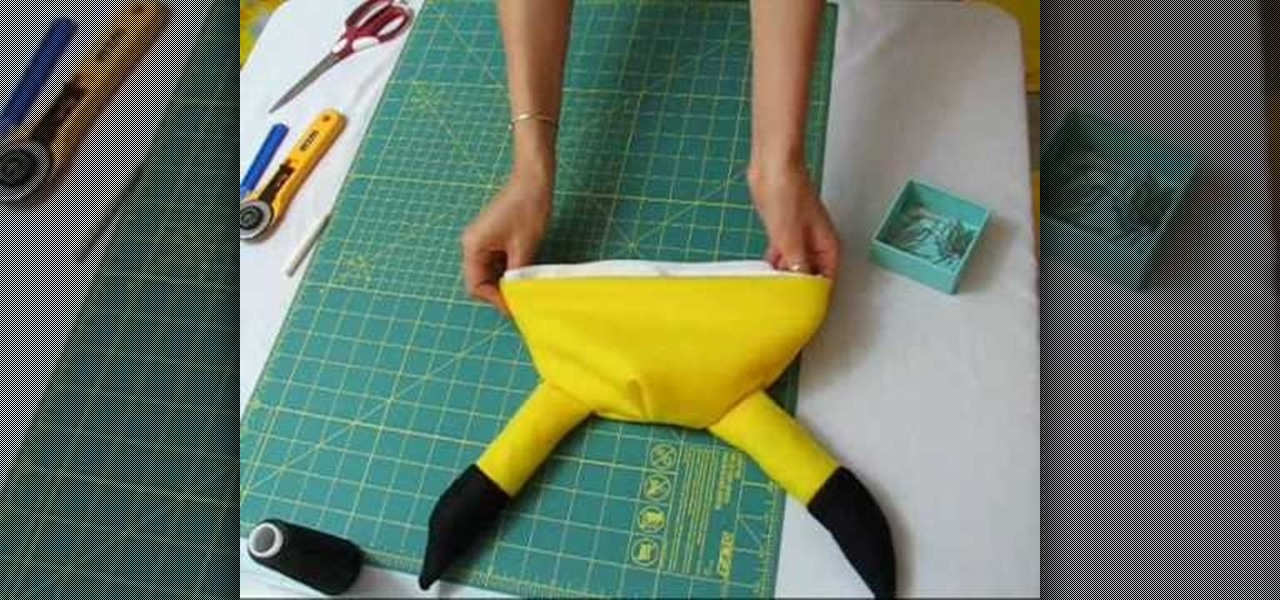
How To: Craft a Pokemon Pikachu beanie hat for Cosplay
Cosplay, or "costume play," is basically dressing up with costumes and accessories to represent a specific character, usually one in anime (like Sailor Moon) or manga. Like most Japanese fashion trends, cosplay emerged from the trendsetting Harajuku district of Japan and continues to thrive today, even in America when people wear costumes to anime conventions.
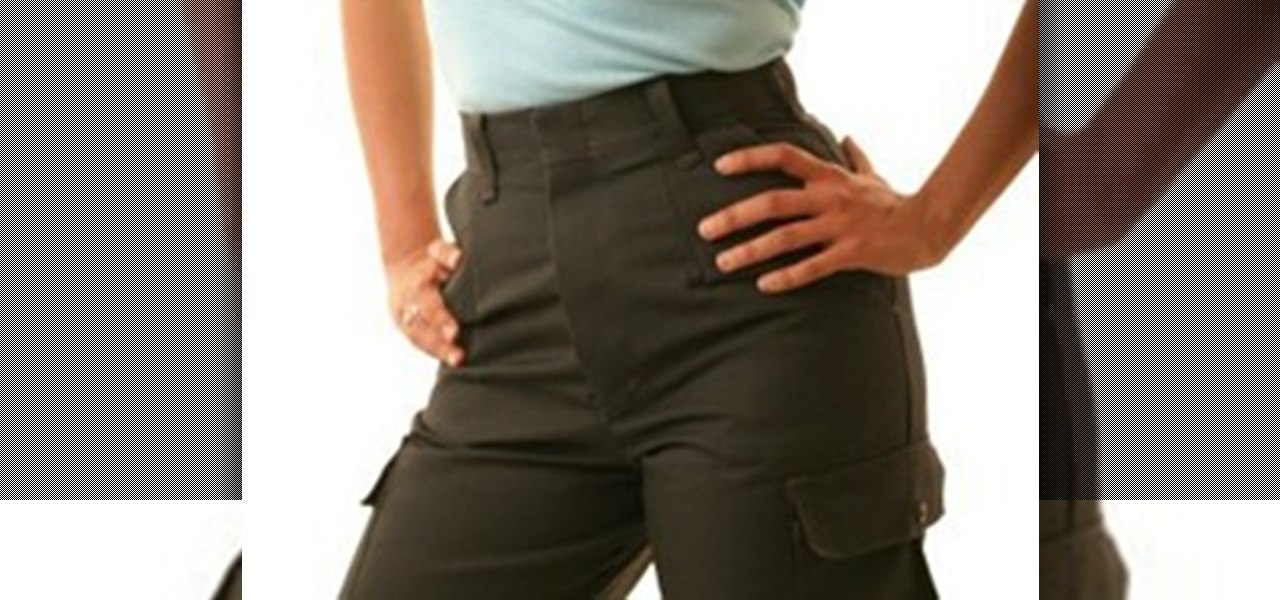
How To: Make a Perfect Fitting Pants Pattern for Yourself
Pants are here to stay. Women of all ages love wearing pants. Jeans, trousers, slacks, corduroys… whatever. Everyone wants them to look and fit great, while being comfortable.
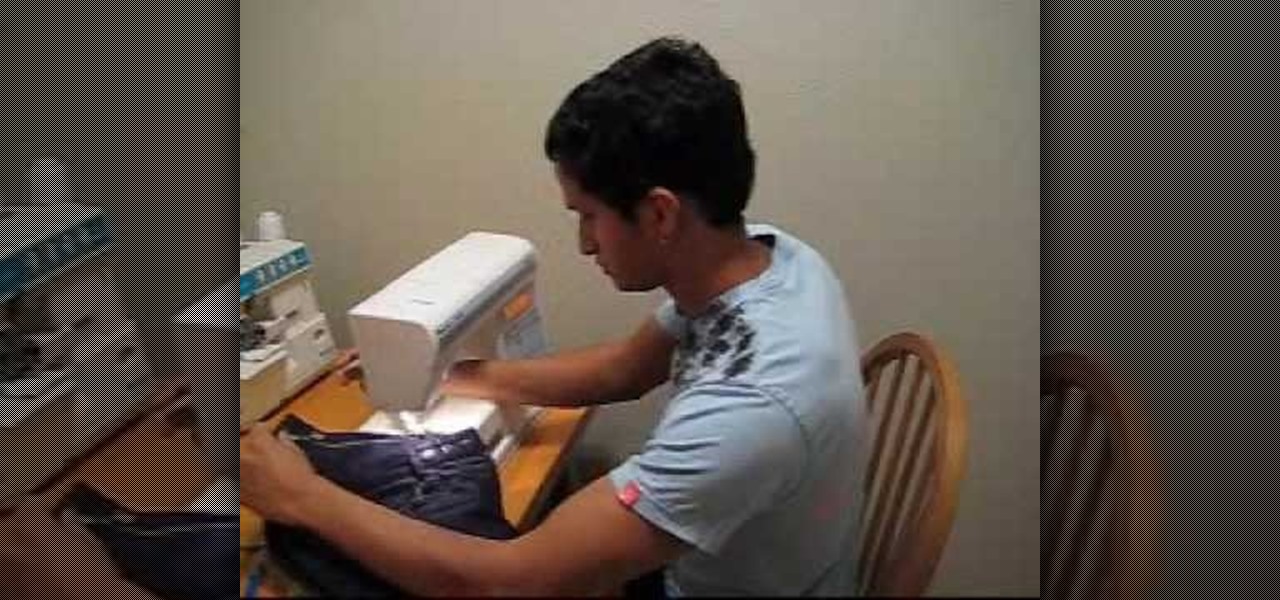
How To: Tailor your own too large pants so they fit perfectly
Tailors can be expensive, but you can be your own tailor! This tutorial shows you how to take a pair of pants that might be a bit too big around the waist and take them in using professional tailoring techniques.

How To: Draft a basic block pattern for pants
A basic block is the simplest, most fitted style for a garment. This tutorial shows you how to draft a basic block pattern for a pair of pants. Once you get this down, you can start adding flared legs and belt loops and other embellishments.
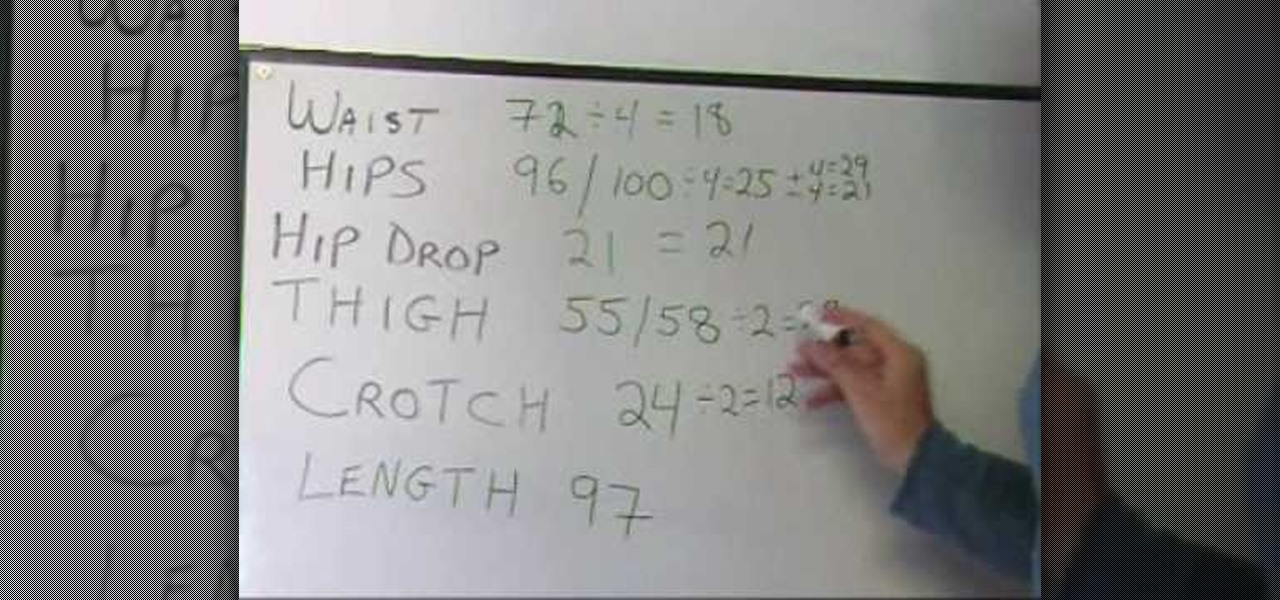
How To: Make a basic pant
In this three-part sewing tutorial, learn how to make a pair of pants that fit like a glove! In the first video, you will learn to take measurements and calculate measurements to plan out your pattern. In the second video, learn how to draw the pant pattern based on your measurement calculations, make a test pant and finalize your pattern design. Lastly, in the third installment of this series, learn how to sew on the zipper and button and stitch the legs of your pants.
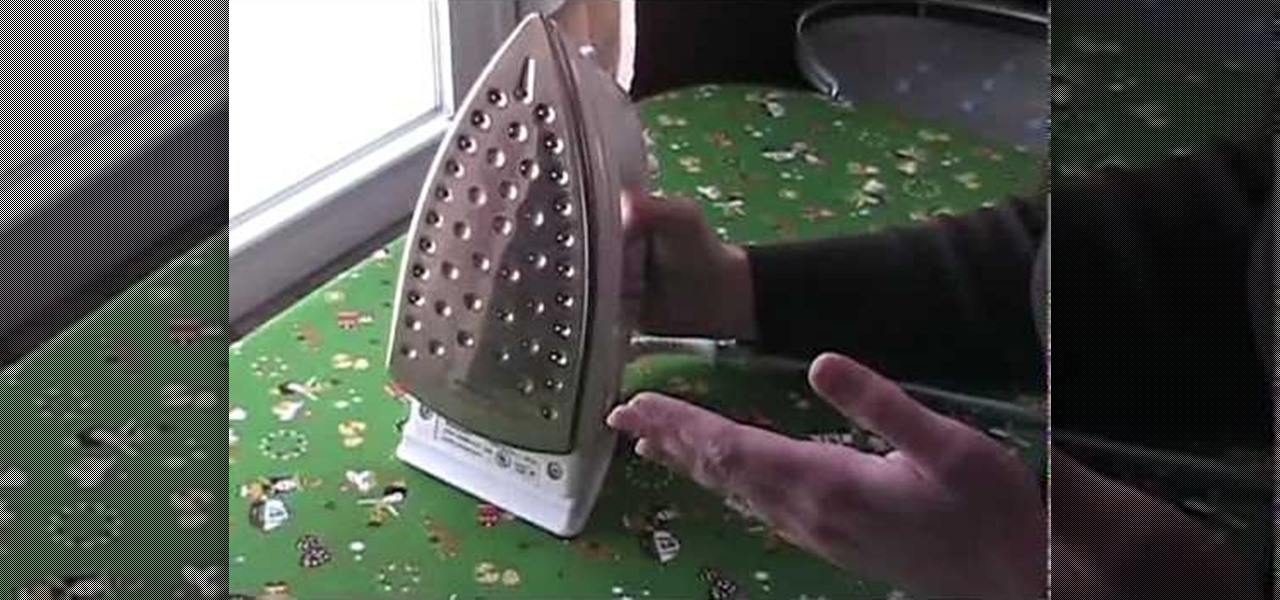
How To: Use Your Iron Correctly & Safely When You're Sewing
The iron is probably the most dangerous tool in your sewing room, especially a steam iron (which is a necessary tool for most sewing projects). Maintain your sewing iron by using clean water. It's also important to know the difference between the pressing and steaming techniques.

How To: Sew you own pair of easy, Victorian style bloomers
The perfect undergarment for your Victorian costume re-creation. You don't need any pattern, just take your measurements and get a yard or so of thin, lightweight fabric. Then cut, pin, sew and finish. Your own pair of Victorian inspired bloomer pants!
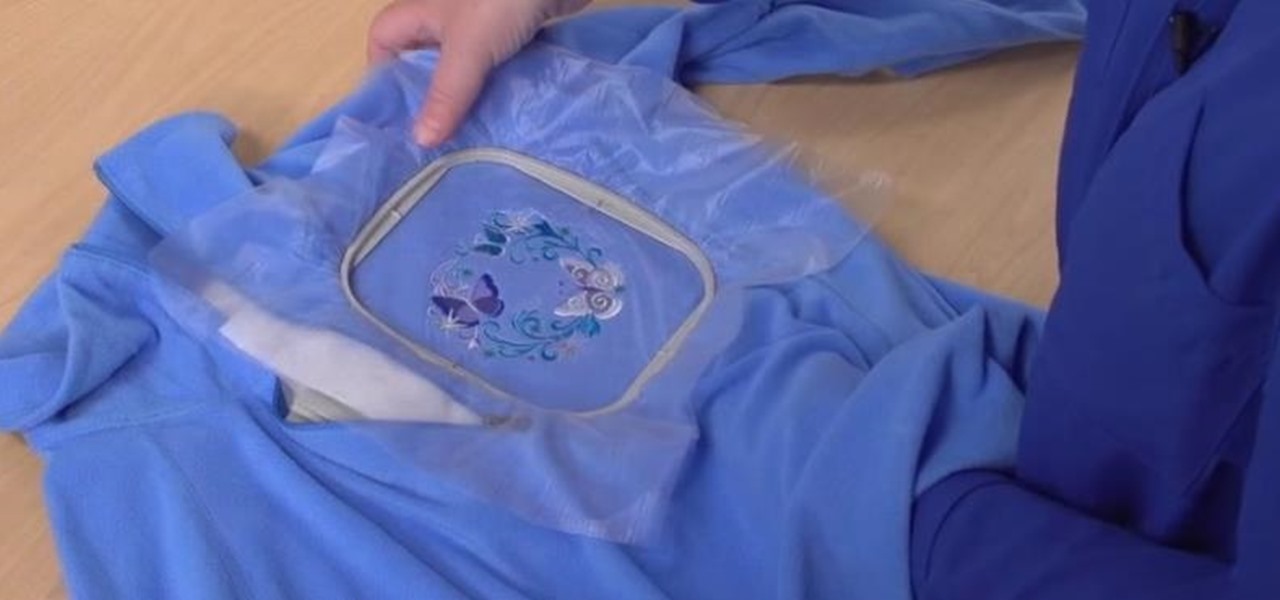
How To: Embroider on Fleece Like an Expert
Fleece is an interesting and versatile fabric -- but what kind of stabilizer should you use? What kind of needle, and what type of embroidery design? All the mysteries of fleece are revealed in this embroidery video tutorial! Learn how to embroider on fleece like an expert with these helpful tips.
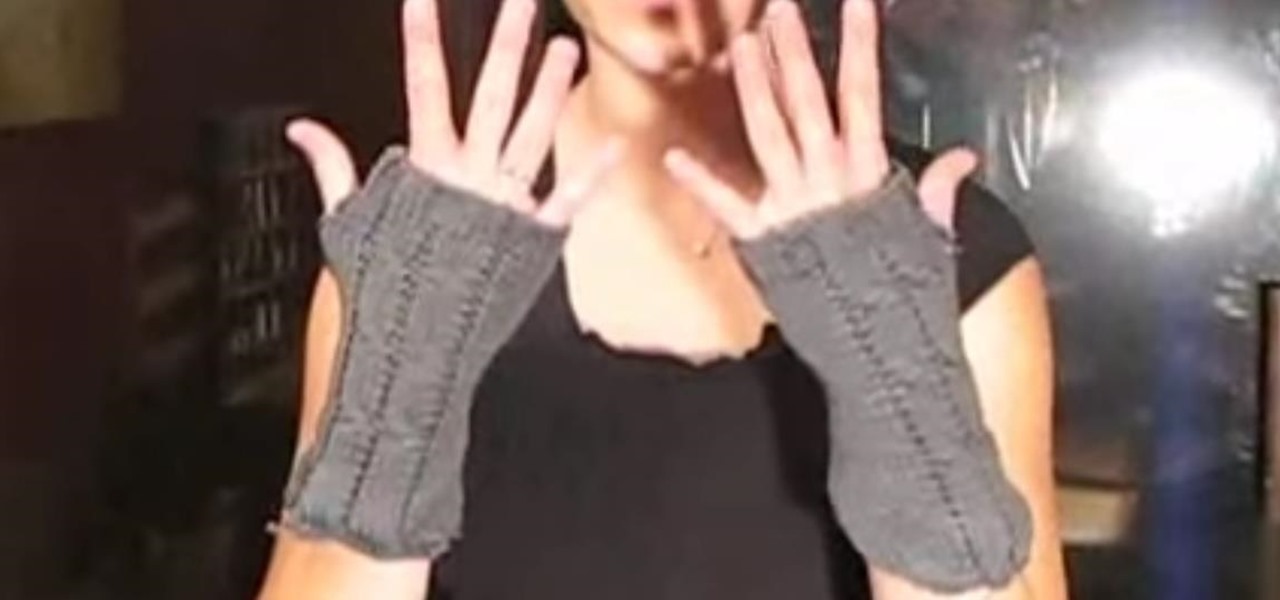
How To: Make Hand Warmers
In this tutorial, we learn how to make hand warmers. You can make this out of pockets off of an old sweater. First, grab a piece of copy paper and measure over two inches, then fold it in half. After this, measure down 1.5" and then draw a line where this mark was. After this, cut the piece out and lay the paper on the sweater, then draw a line on the paper for the thumb holed. After you do this, you will cut out the area on the sweater, then sew it around on the sides. When you are done, you...
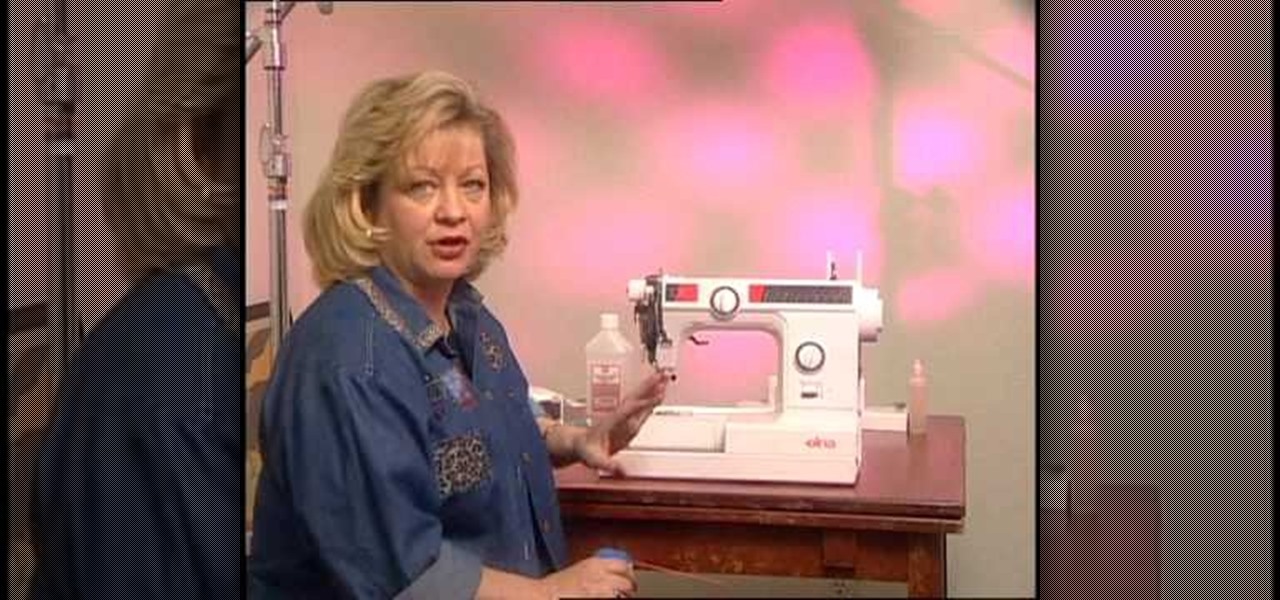
How To: Disassemble your home sewing machine for routine maintenance
Many sewing machine repairs can be made at home, and most repairs can be completely avoided through routine sewing machine maintenance. This tutorial shows you how to carefully disassemble your machine to give it a round of maintenance. You will need a screwdriver - make sure not to lose any of the screws!
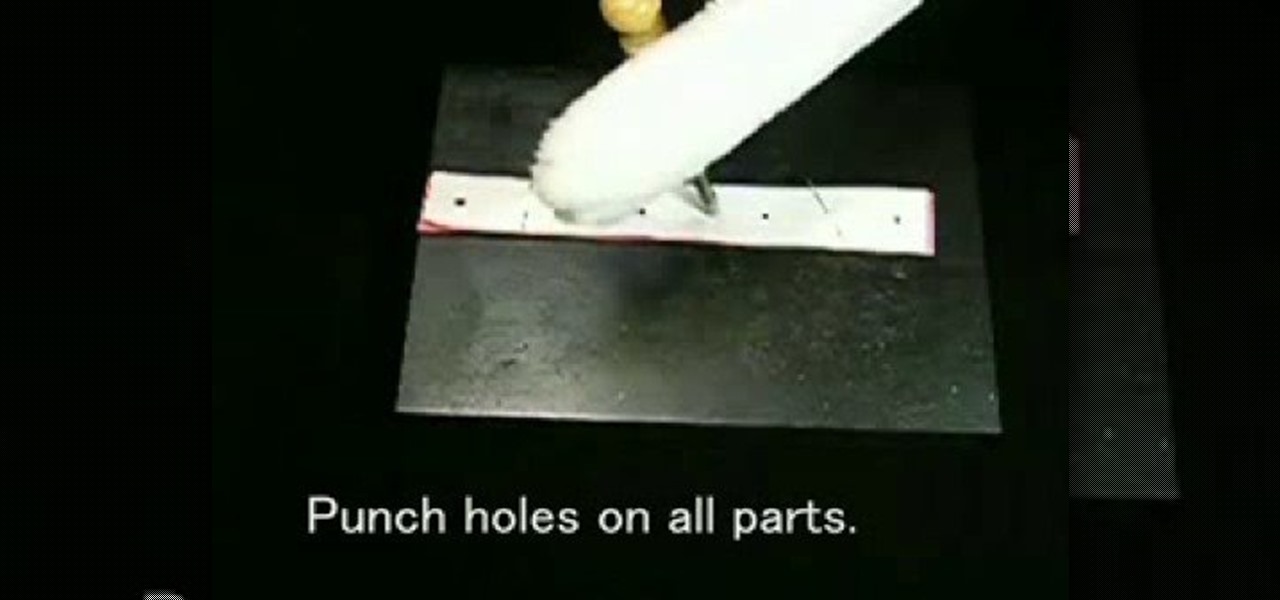
How To: Sew a felt hair scrunchie
The hair scrunchie in this how-to video is so easy to make, even a cat can sew it. You will need a felt sheet of 8" x 8", an elastic string, a cutting punch, a hammer, marking pins, scissors, two big beads, and a cutting mat. Follow along with the step by step instructions in this video sewing tutorial and learn how to make a felt hair scrunchie.
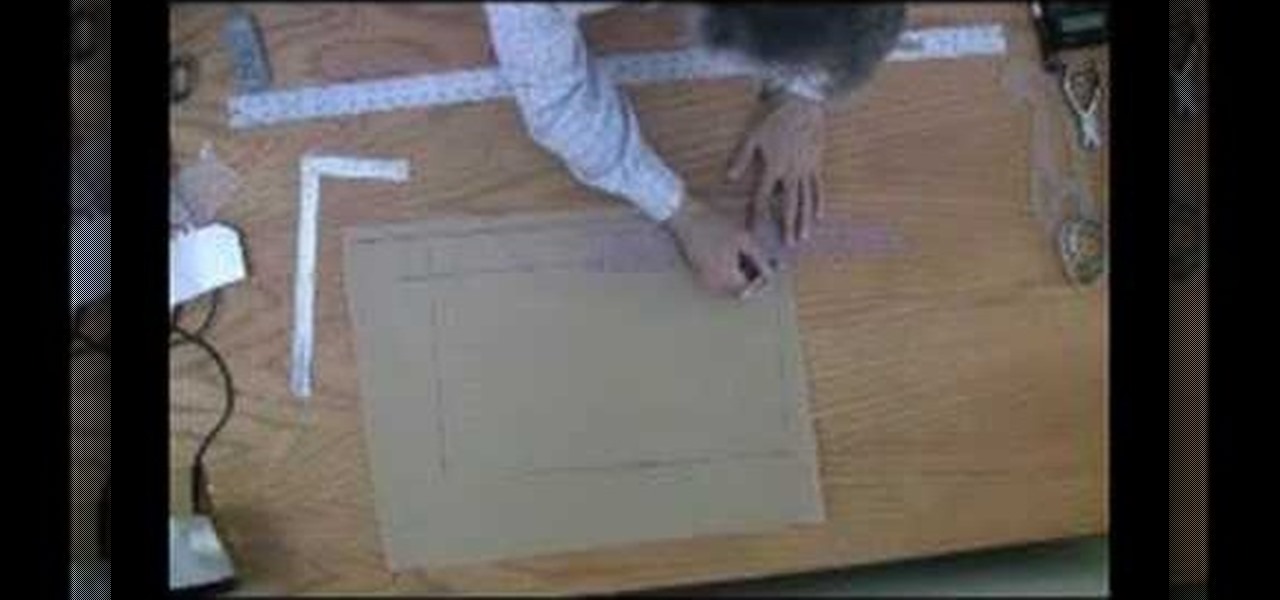
How To: Draft a free pattern for a custom sewn shirt
Drafting your own patterns isn't difficult - and it's a great way to get not only a free pattern, but to make sure that your pattern is custom fit to your own measurements. This video shows you how to draft a basic shirt pattern from scratch.
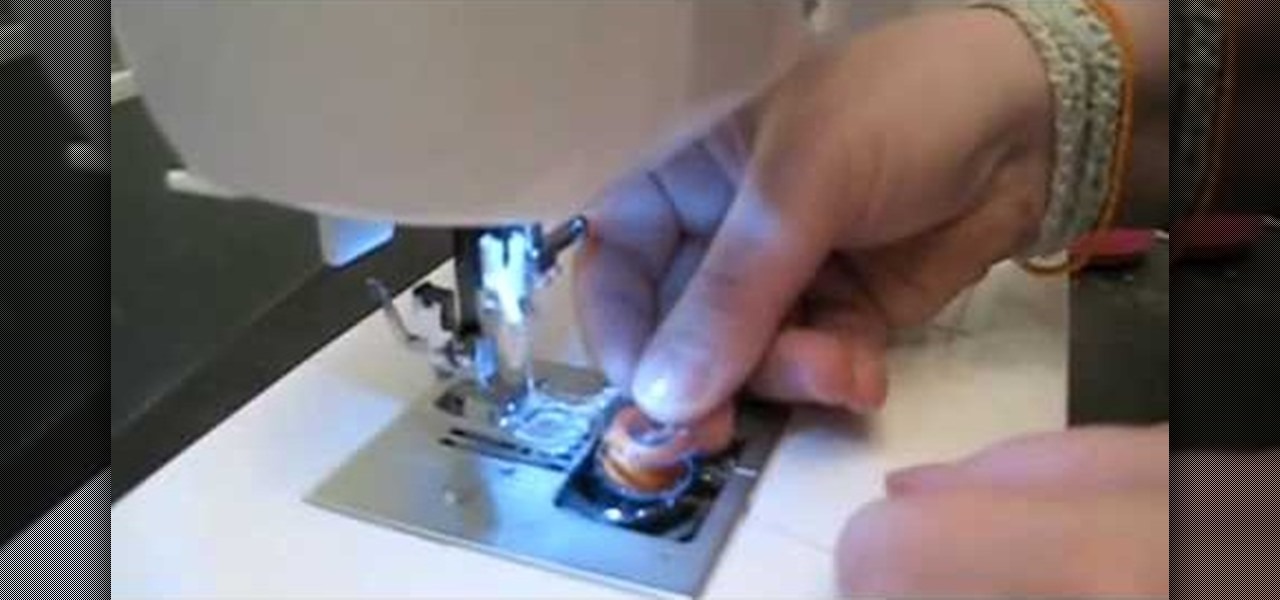
How To: Use your sewing machine as a beginner
Have a sewing machine and want to learn how to use it? If so, this ten-minute tutorial, which presents a general orientation to using an electric sewing machine, may be just what you need. For more information, and to get started using your own machine, watch this easy-to-follow video guide.
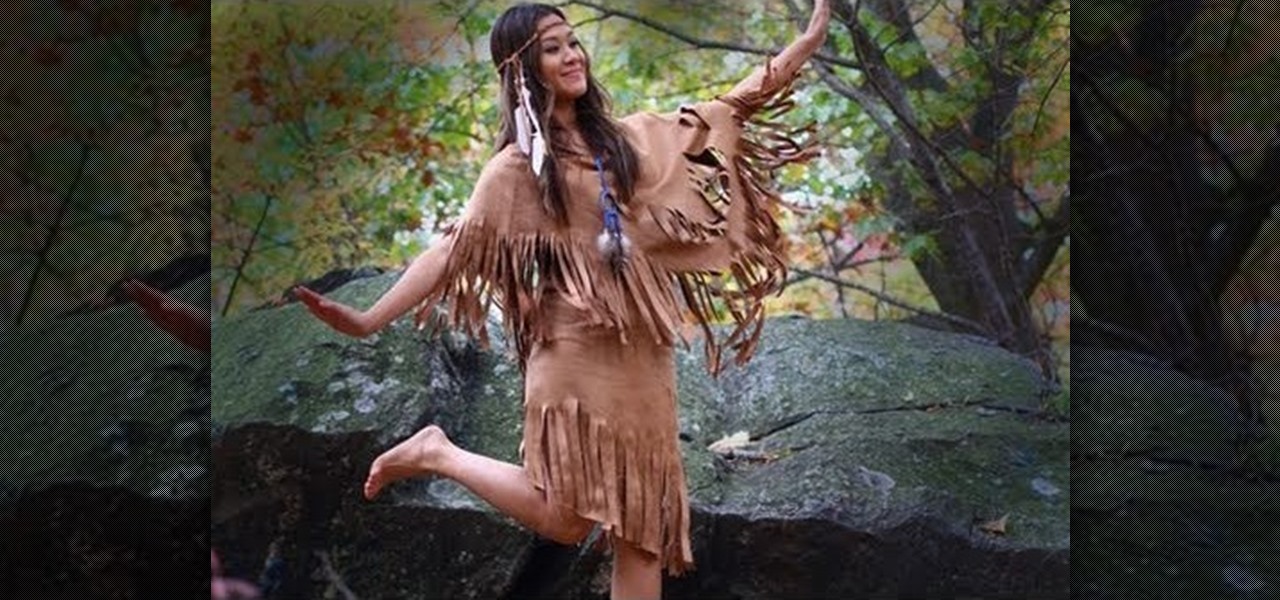
How To: Make your own Native American princess costume
Be an Indian Princess this Halloween! You can make a fun and sexy Native American costume out of just a few yards of suedecloth (faux suede), along with some beads, feathers and other Native American flavored accessories. Go barefoot, or make your own moccasins!
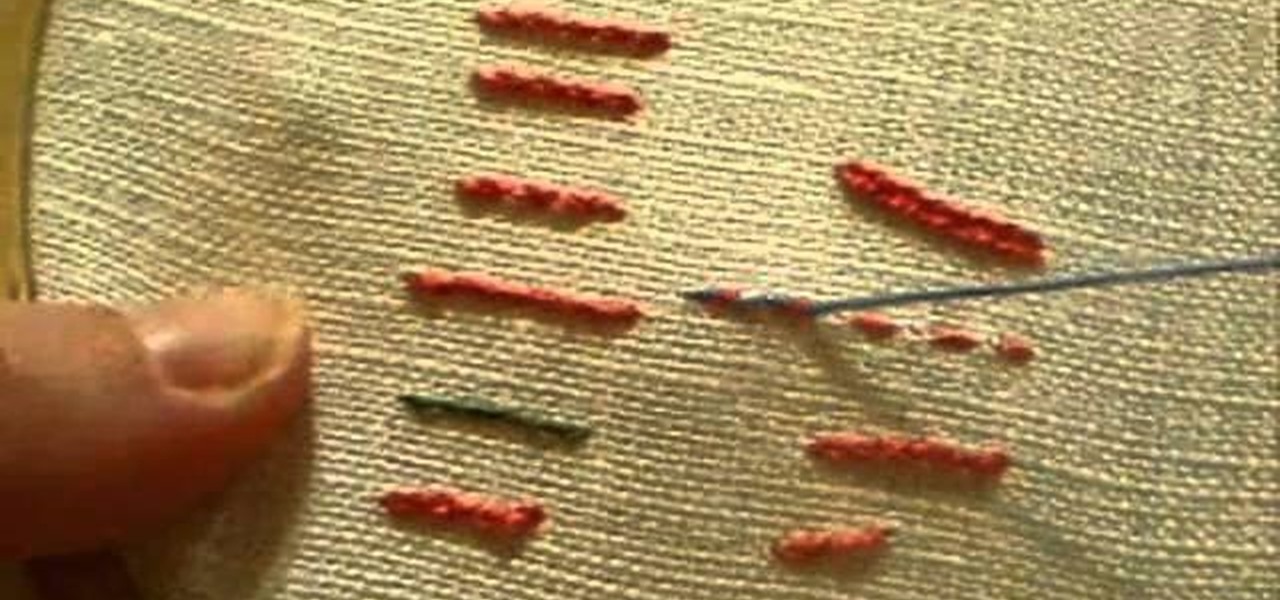
How To: Do the Whipped Running Stitch
Another hand embroidery stitch that's great for beginning embroidery - the whipped running stitch. It's a simple, quick stitch to work. This stitch is one of many line stitches that can be used for bold or delicate outlines, depending on your choice of thread. Watch this video from Needle 'n Thread to see how it's done.
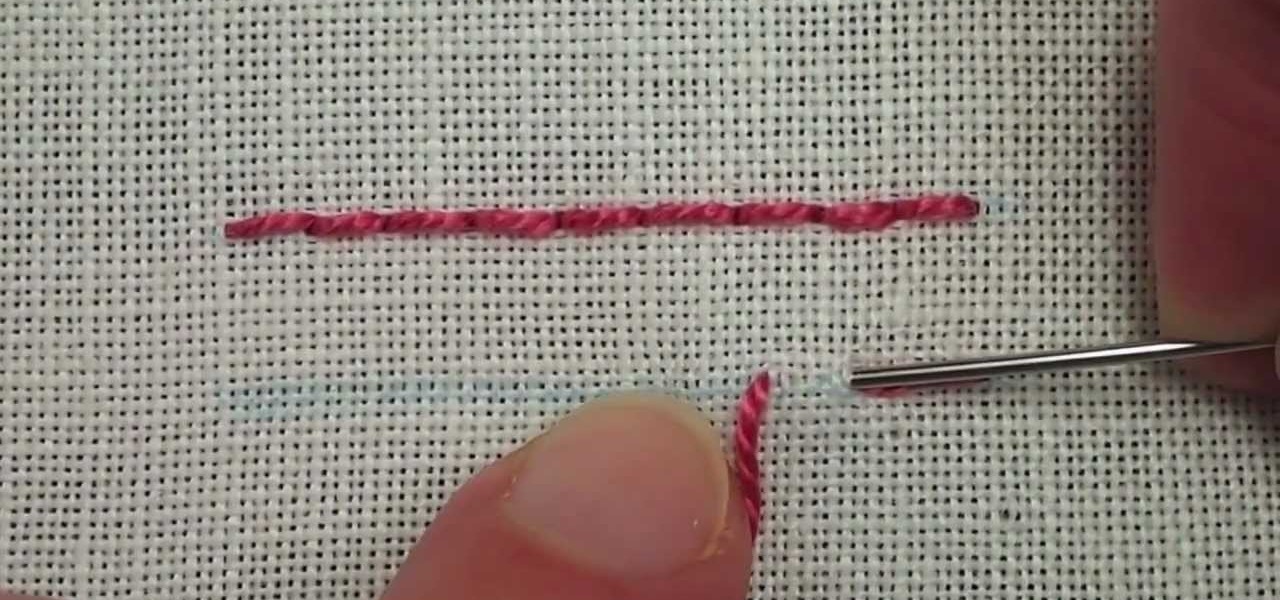
How To: Do the Back Stitch
Another simple hand-embroidery stitch, the backstitch is useful in many applications. It's commonly seen in counted-thread embroidery, like counted cross stitch, but it's also used often in free-style surface embroidery. Watch this video from Needle 'n Thread to see how it's done.
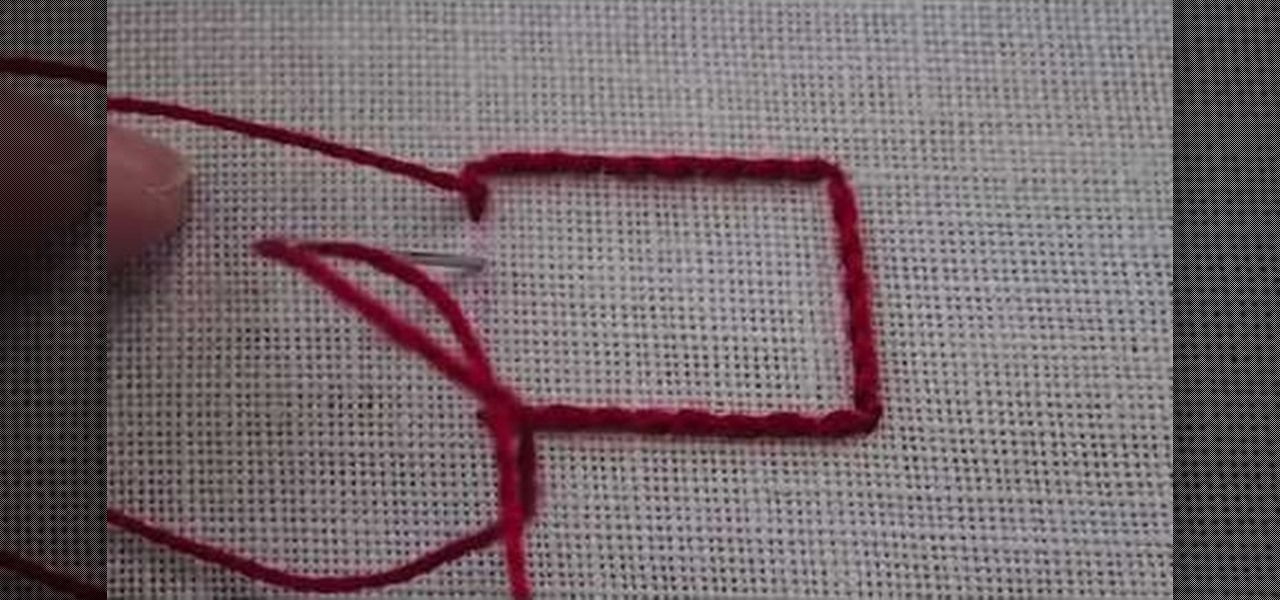
How To: Do the Stem Stitch
The stem stitch is a versatile embroidery stitch. It can be used to outline or to fill an area. Learn how to do it yourself with this video from Needle 'n Thread.
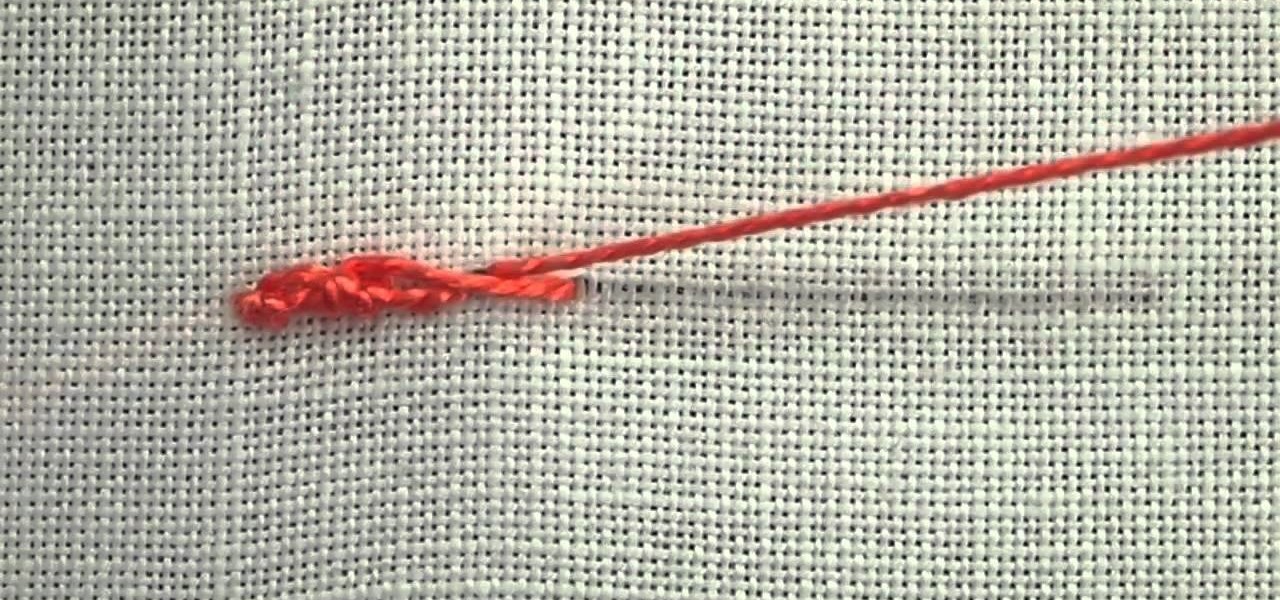
How To: Do the Portuguese Knotted Stem Stitch
Here's a video tutorial from Needle 'n Thread for Portuguese Knotted Stem Stitch. This is a line stitch good for outlining, especially when you want a little heavier line with some texture to it.
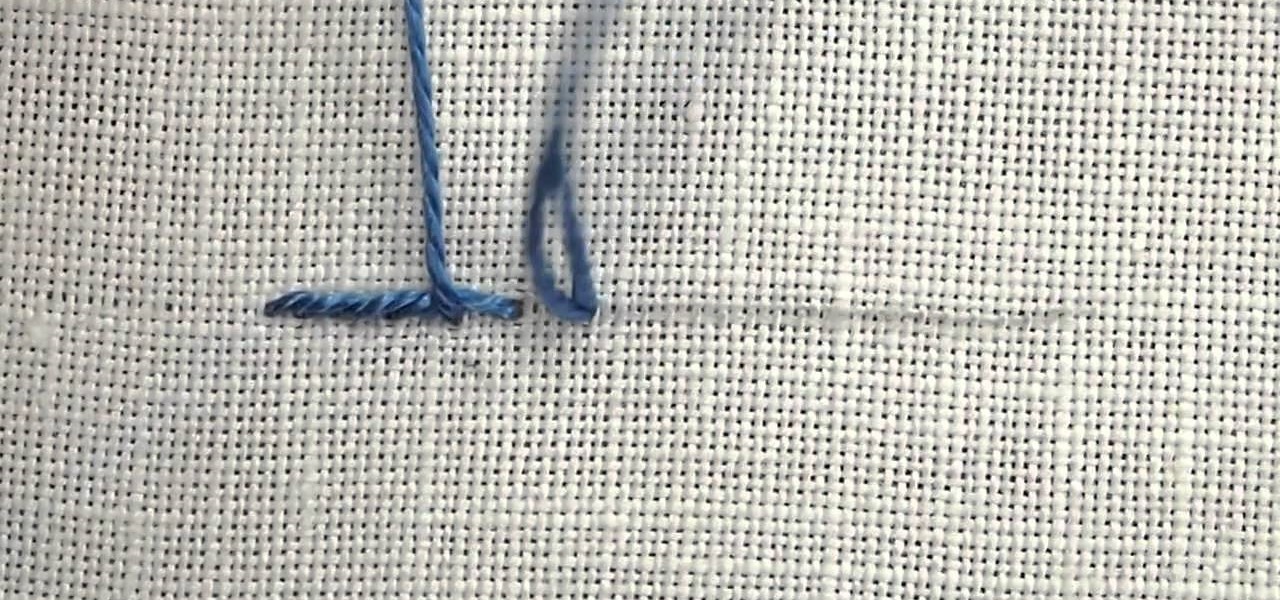
How To: Do the Outline Stitch
Here's a couple video tutorials from Needle 'n Thread for a basic hand embroidery stitch - the outline stitch. It's another versatile, easy stitch!
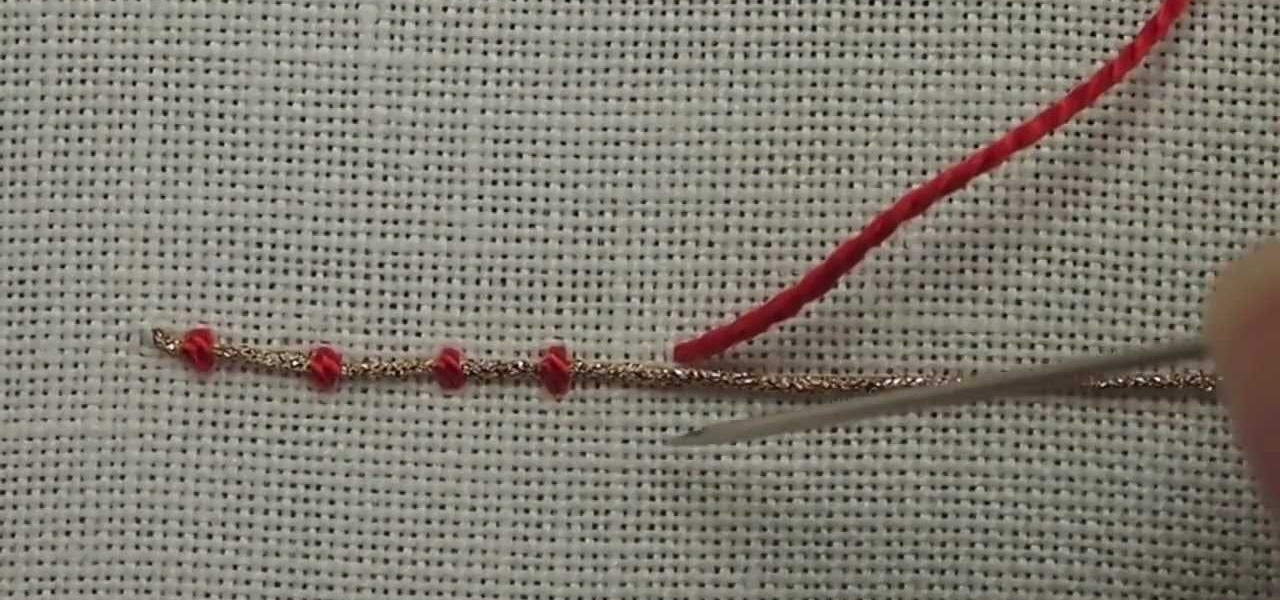
How To: Do the Couching Stitch
Couching is another easy embroidery stitch in hand embroidery, and a great way to create decorative line stitches that scroll and twirl about. It's also widely used for filling areas, and historically was used to great effect during the Middle Ages and Renaissance in a technique called Or Nue. Here's a video from Needle 'n Thread that demonstrates couching a single thread for an outline.

How To: Do the Split Stitch
The split stitch is another easy hand embroidery stitch, perfect for beginners and used often by advanced embroiderers. Here's a tutorial from Needle 'n Thread that will teach you two methods of using the split stitch.

How To: Do the Herringbone Stitch
This is a video tutorial from Needle 'n Thread for the herringbone stitch, another versatile and easy embroidery stitch for beginners, and used often by all levels of embroiderers.
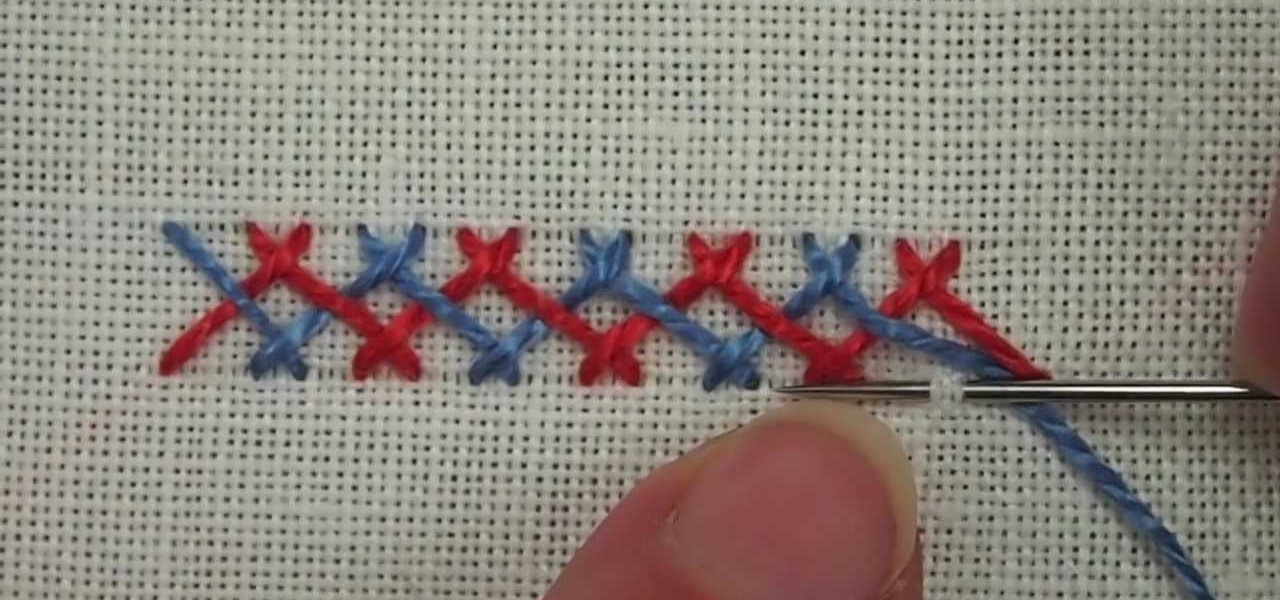
How To: Do the Double Herringbone Stitch
Here's a video tutorial from Needle 'n Thread for the double herringbone stitch, which is a variation of the herringbone stitch. Just like the regular herringbone, this stitch can be used as a decorative band or edging.
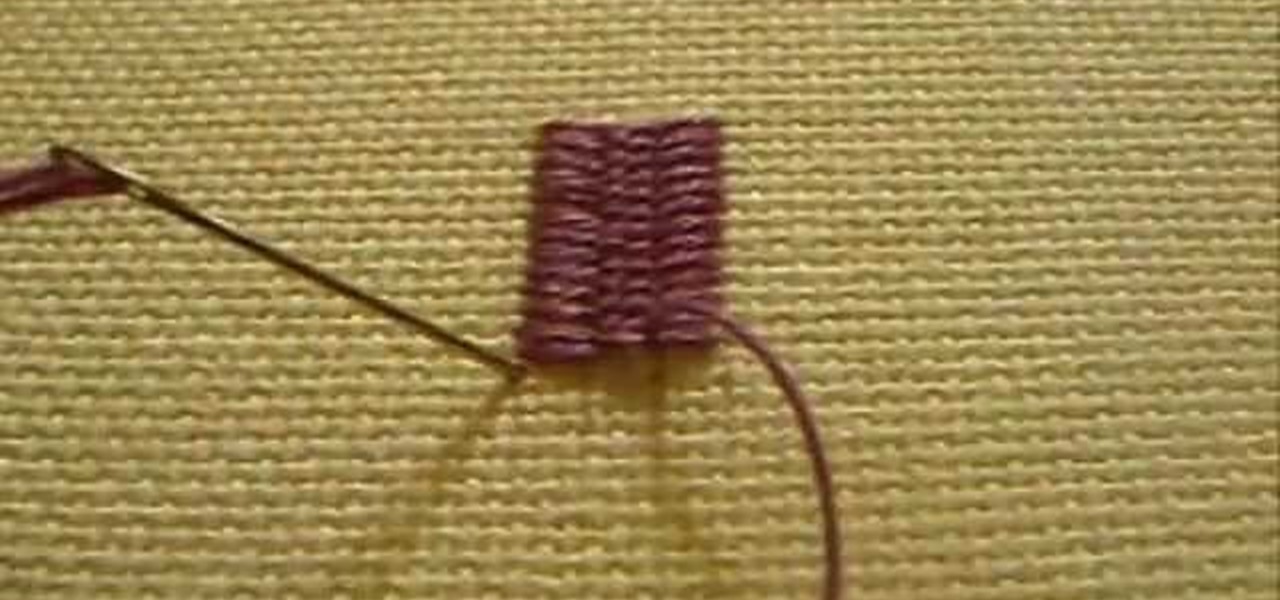
How To: Do the Cretan Stitch
The cretan stitch is used in hand embroidery to create bands, to fill (any shape - leaves, for example), and it can be worked closed or open, depending on the effect you want. Watch this video from Needle 'n Thread to see how it's done.
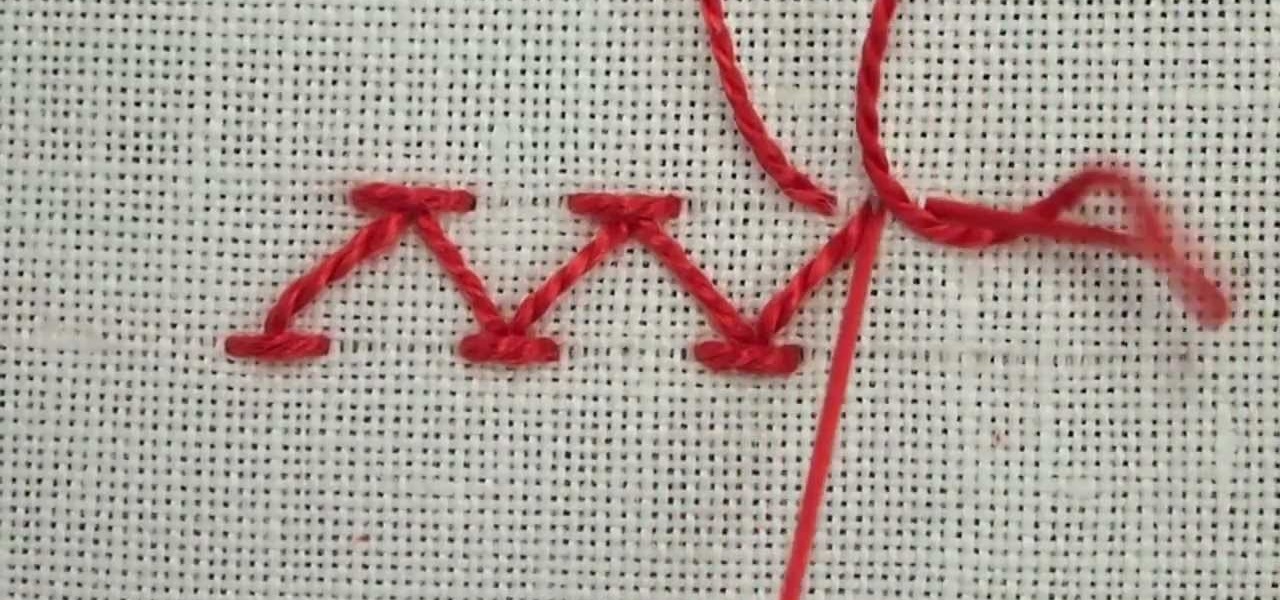
How To: Do the Chevron Stitch
The Chevron Stitch is used in hand embroidery to work decorative bands and seam embellishments. It's a great stitch for smocking, too. Chevron Stitch is a lot like the herringbone stitch, differing only slightly by the fact that the stitches on the upwards stroke do not cross over the downward stroke stitches. It also sports a little straight stitch cap at the top and base of each triangle shape. Watch this video from Needle 'n Thread to see how it's done.
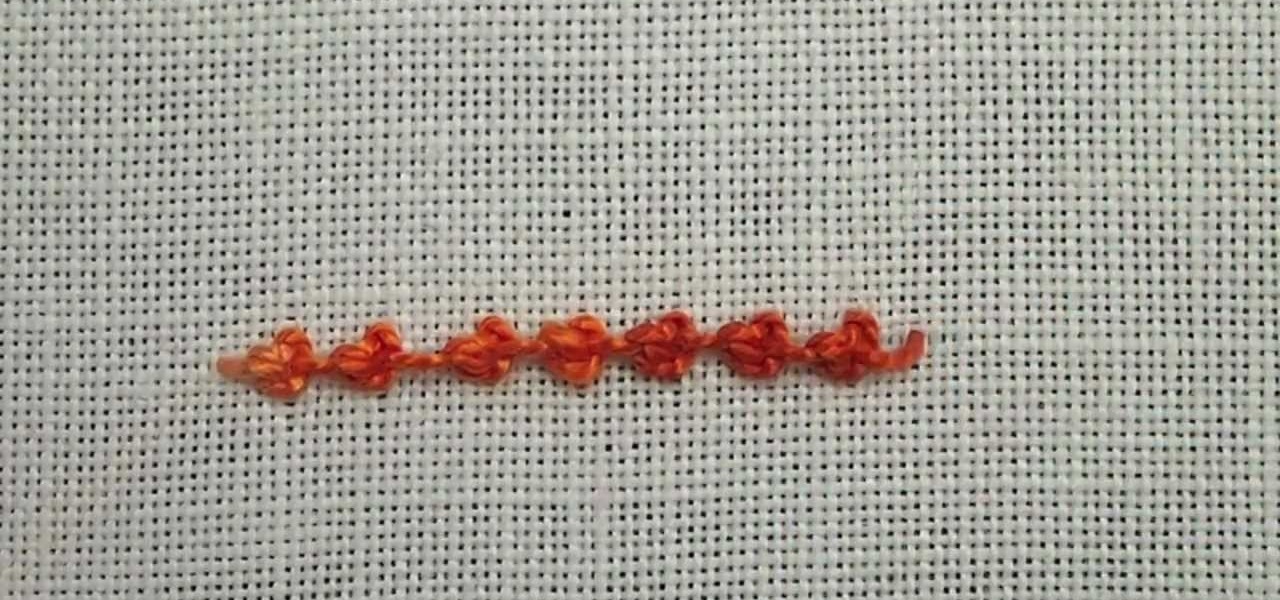
How To: Do the Palestrina Stitch
Here's another video tutorial from Needle 'n Thread for hand embroidery stitches - this one is for the Palestrina stitch. Palestrina stitch is used for outlining or filling and is common in both Jacobean designs as well as in Mountmellick embroidery, the latter because it gives a highly textured line or fill area.


